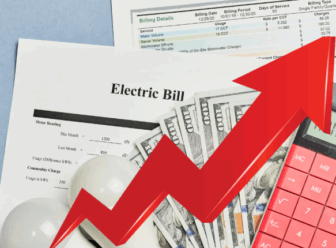The Baltimore Sun
By Mike Tidwell and Michael Noble
Now that the president and most Americans want national action on global warming, how do we pick the best legislation for reducing carbon pollution? There are three critical tests. First, is the climate policy simple? Second, is it fair? And third, is it built to last?
Congress needs to adopt a statutory “cap” on greenhouse gas pollution as soon as possible. Let’s agree that the nation’s total carbon pollution will peak in 2012 and then get smaller each year – by law – until it’s drastically reduced by 2020 and almost gone by 2050. That’s how a carbon cap works: phasing out pollution from burning oil, coal and natural gas while ushering in clean energy.
There are lots of ideas for how to design a cap, and several bills have been introduced in Congress. However, one bill clearly stands out: the Cap and Dividend Act introduced this month by Rep. Chris Van Hollen of Maryland.
First, the Van Hollen bill is ingeniously simple. It abandons the complicated idea of a “downstream” cap – of trying to limit pollution from millions of tailpipes and factory smokestacks. Instead, it caps carbon coming into to the economy, affecting only a thousand or so companies that make the first sale of raw coal, oil and natural gas into the American market. Capping carbon upstream is easier to monitor and harder to game.
Polluters get zero free passes under this bill. You want to sell coal into the economy? Buy a carbon permit. Then, we reduce the total permits sold year after year, guided by the dictates of climate science. Further, there are no controversial “carbon offsets” under this bill. You can’t pay Zambian farmers to promise to cut carbon on your behalf.
The bill is also fair to everyone, because it correctly answers this question: “Who owns the sky?” We all do. So all the money collected from the carbon permits would go straight to the U.S. Treasury, not to special interests. Then, after being divided by 300 million, it goes straight to you, me and Aunt Betty in equal shares. While fossil fuel prices rise, our families’ purchasing power is protected – close to $100 per month per family, for starters. The money would increase over time as carbon cuts go deeper and permit prices rise. Thus, low- and middle-income Americans would have more money in their pockets (or at least break even) to offset rising energy prices, while wealthier Americans would have appropriate market-based incentives to become efficient.
Simple? Check. Fair? Check. Now what about “built to last”?
It’s going to take a few decades to fully wean America off of fossil fuels, the main source of carbon pollution. Unfortunately, other carbon cap proposals before Congress are highly vulnerable to repeal if political winds shift again, because they tend to favor certain special interests and don’t adequately protect all American families.
But not the Van Hollen bill – because of the genius of the carbon dividend. It’s like Social Security. In the 1930s, Franklin D. Roosevelt realized that if he paid benefits monthly and evenly to rich and poor alike, no future Congress would repeal it. Too many voters would fight back. Seventy years later, we know FDR was right.
This is the best global warming bill ever written. It’s designed for the long haul. HR 1862 needs only minor additions, including a reasonable transition fund to help retrain affected workers such as coal miners, and some assistance to states disproportionately affected by the carbon cap.
Americans, when asked to consider other carbon cap legislation on Capitol Hill, should pull out the big-three check list. Simple? Fair? Durable?
They’ll soon discover the Cap and Dividend Act has it right.
Mike Tidwell is executive director of the Chesapeake Climate Action Network in Takoma Park. His e-mail is mikewtidwell@gmail.com. Michael Noble is executive director of Fresh Energy in St. Paul, Minn. Both groups advocate for solutions to global warming.




